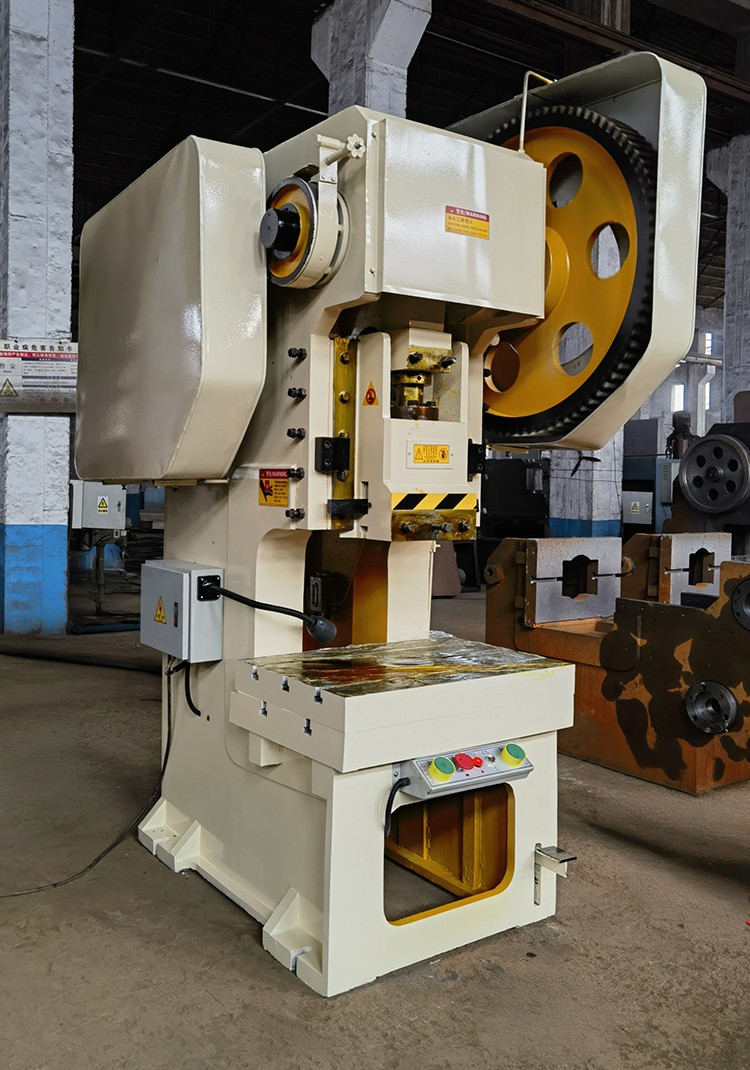We are a professional punching machine manufacturer with over 10 years of industry experience. Today, we would like to introduce you to the care and maintenance of punching machine:

Punching machine is the core equipment of metal stamping processing, and its operation status directly affects the production efficiency and processing quality. Scientific maintenance and repair can reduce equipment failure, prolong service life, and ensure safe operation. The following is a systematic introduction to the main points of punching machine maintenance from the aspects of daily inspection, regular maintenance, maintenance of key components and operation standardization.
1, Daily inspection
Daily inspection is a key part of preventing equipment failure and should be carried out before each start-up, during operation and after shutdown.
(1)Check the lubrication system. Observe whether the oil level of the lubricant tank is normal, whether the oil circuit is smooth, and whether the lubrication points are fully lubricated. If the oil is found to be insufficient or contaminated, it needs to be supplemented or replaced in time. The guide rails, crankshafts, gears and other moving parts of the punch press have high lubrication requirements, and lack of oil easily leads to increased wear.
(2)Check the status of fasteners. Press in the high-speed stamping process vibration, bolts, nuts and other fasteners are easy to loosen. Focus on checking the mold mounting bolts, slider connectors and body foot bolts to ensure that there is no loosening.
(3)Observe whether the electrical system is normal. Check whether the control panel buttons, emergency stop switches, travel switches and other functions are sensitive, and whether the wiring is aging or broken. Listen to the sound of the equipment during operation, if there is abnormal noise or impact sound, you should immediately stop the machine to investigate.
2, Periodic maintenance
Regular maintenance is divided into weekly maintenance, monthly maintenance and annual maintenance, according to the intensity of use of equipment to develop a reasonable maintenance program.
Weekly lubrication system should be a comprehensive inspection, clean oil nozzle, oil pipe, to ensure that the lubricant is free of impurities. At the same time, clean the metal chips and oil on the surface of the table and mold to prevent debris from affecting processing accuracy. Check the wear and tear of the transmission belt or gears, and adjust or replace them if necessary.
Monthly maintenance of the hydraulic or pneumatic system (if equipped) is required to check the quality of the fluid or compressed air and troubleshoot line leaks. Clean and re-grease critical parts such as slide guides and bearings. Electrical parts need to be checked for contactors and relay contacts to avoid poor contact due to carbon or oxidation.
Annual maintenance should be performed by a professional technician, including a thorough check of the punch press's mechanical accuracy, electrical system and safety devices. Replace, if necessary, severely worn parts, such as bearings, seals, brakes, etc., and calibrate the equipment to ensure stable performance.
3, Maintenance of key components
The core components of the press include the crankshaft and connecting rod mechanism, slider, clutch and braking system, and the status of these components directly affects the safety of equipment operation.
The crankshaft and connecting rod are the power transmission core of the press, which should be checked regularly for wear and tear to ensure that there is no crack or deformation. Lubrication must be sufficient to avoid damage caused by dry friction. The clearance of the slide guide should be kept within a reasonable range, too big will affect the stamping precision, too small will increase the running resistance.
Clutch and braking system is related to the safety of press start and stop, need to regularly check the friction plate wear, adjust the braking gap to ensure its response is sensitive. If the braking time is found to be prolonged or the clutch slips, the relevant parts should be repaired or replaced in time.
Maintenance of the mold is equally important, need to check whether the edge is sharp before use, whether the installation is firm. Avoid overloading during the stamping process, clean the surface residue of the mold in time after stopping, and apply anti-rust oil for protection.
4, Operation norms and precautions
Correct operation habits can effectively reduce equipment loss. Before starting the machine, you need to make sure that the mold is installed correctly and the material is placed in accordance with the requirements. Strictly prohibit over-specification stamping during operation to avoid overloading the equipment. After stopping the machine, you should make the slider return to the upper stop point, cut off the power supply, and clean up the working area.
Operators need to be professionally trained and familiar with equipment performance and operating procedures. Non-professionals should not adjust the parameters of the equipment or dismantle the guards without authorization. If the equipment is left idle for a long time, it should be periodically energized for no-load operation to prevent the electrical components from moisture or mechanical parts from rusting.
Maintenance and servicing of presses requires a combination of daily inspections and regular schedules, focusing on lubrication, fastening and the condition of key components. Standardized maintenance not only reduces downtime, but also improves processing accuracy and safety. Operators and maintenance personnel should work closely together to ensure that the equipment is always in good condition, providing a reliable guarantee for efficient production.
If you are interested in punching machine, please contact us.
 Address:Room 1202, Detaitang Building, No. 118 Huaguang Road, Zhangdian District, Zibo, Shandong
Address:Room 1202, Detaitang Building, No. 118 Huaguang Road, Zhangdian District, Zibo, Shandong WhatsApp:+8615653328535
WhatsApp:+8615653328535 Wechat: +8615965331535
Wechat: +8615965331535  E-mail:zs@sdsmachinery.com
E-mail:zs@sdsmachinery.com